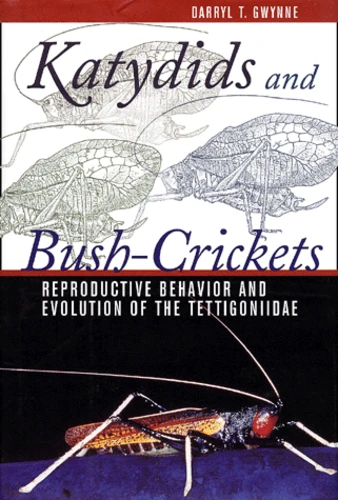Katydids And Bush-Crickets. Reproductive Behavior And Evolution Of The Tettigoniidae
Par :Formats :
- Paiement en ligne :
- Livraison à domicile ou en point Mondial Relay indisponible
- Retrait Click and Collect en magasin gratuit
- Nombre de pages317
- PrésentationRelié
- Poids0.75 kg
- Dimensions16,4 cm × 24,3 cm × 2,7 cm
- ISBN0-8014-3655-9
- EAN9780801436550
- Date de parution24/07/2001
- ÉditeurComstock / Cornell
Résumé
Given their diversity and frequent use as biological model systems for studying animal behavior, katydids and bush-crickets deserve to be better known. More than 6,000 described species are dispersed across all continents except Antarctica, and are commonly found in field, forest, and bushland habitats. Despite their abundance, most katydid species are seldom seen because they are hidden in vegetation during daylight hours. Katydids and bush-crickets are widely used as subject animals for biologists studying sexual communication - the calls of males to attract sexually responsive females - and mate choice. This book closely examines the practice of "nuptial feeding" by male katydids. Darryl T. Gwynne also emphasizes the methods and practice of insect behavioral research. Gwynne outlines the evolution of katydid and bush-cricket behavior and how it has proven valuable in testing Darwin's theory of sexual selection. These accounts are enriched by many illustrations. In this unprecedented book on the biology of this group of insects, Gwynne's chapters treat: diversity and biology, life cycles, ecology, mating patterns and courtship feeding, sexual selection, communication, and evolution of sexual differences.
Given their diversity and frequent use as biological model systems for studying animal behavior, katydids and bush-crickets deserve to be better known. More than 6,000 described species are dispersed across all continents except Antarctica, and are commonly found in field, forest, and bushland habitats. Despite their abundance, most katydid species are seldom seen because they are hidden in vegetation during daylight hours. Katydids and bush-crickets are widely used as subject animals for biologists studying sexual communication - the calls of males to attract sexually responsive females - and mate choice. This book closely examines the practice of "nuptial feeding" by male katydids. Darryl T. Gwynne also emphasizes the methods and practice of insect behavioral research. Gwynne outlines the evolution of katydid and bush-cricket behavior and how it has proven valuable in testing Darwin's theory of sexual selection. These accounts are enriched by many illustrations. In this unprecedented book on the biology of this group of insects, Gwynne's chapters treat: diversity and biology, life cycles, ecology, mating patterns and courtship feeding, sexual selection, communication, and evolution of sexual differences.

